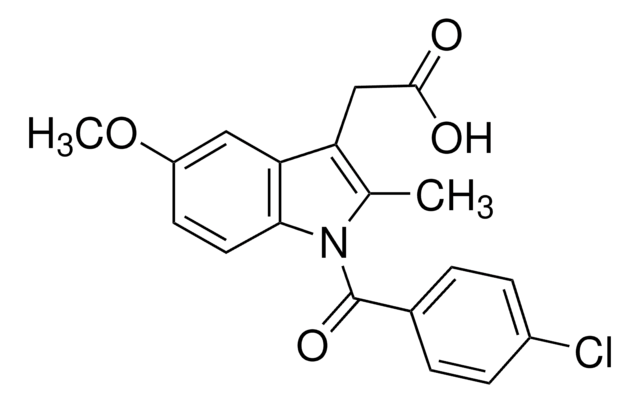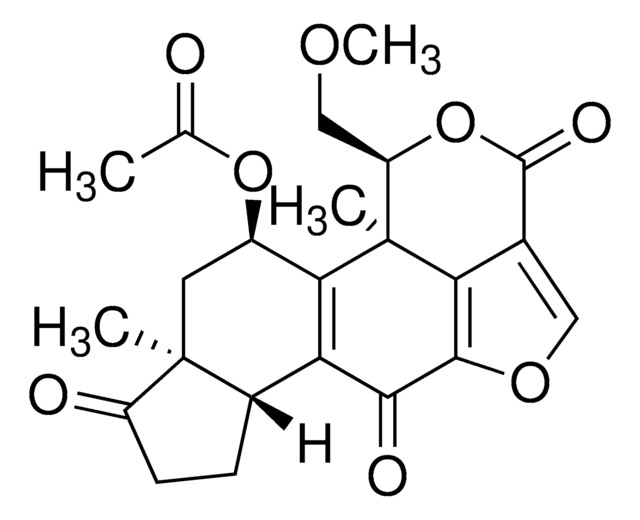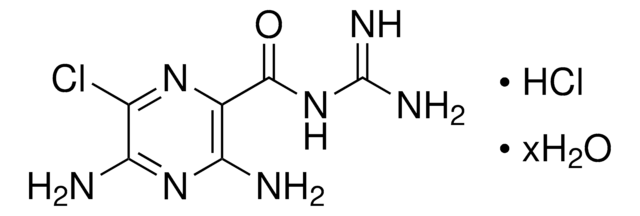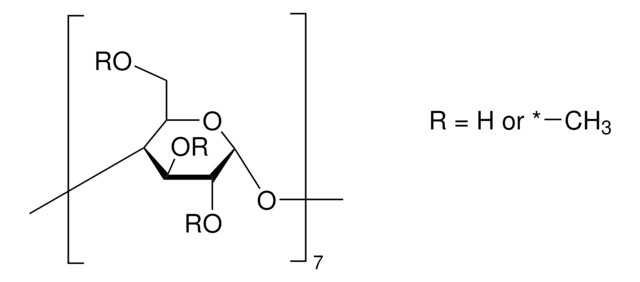B6309
(R)-Butaprost
≥98% (HPLC)
Sinônimo(s):
(1R,2R,3R)-3-Hydroxy-2-[(1E,4R)-4-hydroxy-4-(1-propylcyclobutyl)-1-butenyl]-5-oxo-cyclopentaneheptanoic acid methyl ester
About This Item
Produtos recomendados
Nível de qualidade
Ensaio
≥98% (HPLC)
Formulário
oil
cor
light yellow
solubilidade
DMSO: freely soluble
ethanol: freely soluble
originador
Bayer
temperatura de armazenamento
−20°C
cadeia de caracteres SMILES
CCCC1(CCC1)[C@H](O)C\C=C\[C@H]2[C@H](O)CC(=O)[C@@H]2CCCCCCC(=O)OC
InChI
1S/C24H40O5/c1-3-14-24(15-9-16-24)22(27)12-8-11-19-18(20(25)17-21(19)26)10-6-4-5-7-13-23(28)29-2/h8,11,18-19,21-22,26-27H,3-7,9-10,12-17H2,1-2H3/b11-8+/t18-,19-,21-,22-/m1/s1
chave InChI
XRISENIKJUKIHD-LHQZMKCDSA-N
Aplicação
Ações bioquímicas/fisiológicas
Características e benefícios
Código de classe de armazenamento
11 - Combustible Solids
Classe de risco de água (WGK)
WGK 3
Ponto de fulgor (°F)
Not applicable
Ponto de fulgor (°C)
Not applicable
Equipamento de proteção individual
Eyeshields, Gloves, type N95 (US)
Escolha uma das versões mais recentes:
Já possui este produto?
Encontre a documentação dos produtos que você adquiriu recentemente na biblioteca de documentos.
Conteúdo relacionado
Discover Bioactive Small Molecules for Lipid Signaling Research
Nossa equipe de cientistas tem experiência em todas as áreas de pesquisa, incluindo Life Sciences, ciência de materiais, síntese química, cromatografia, química analítica e muitas outras.
Entre em contato com a assistência técnica







